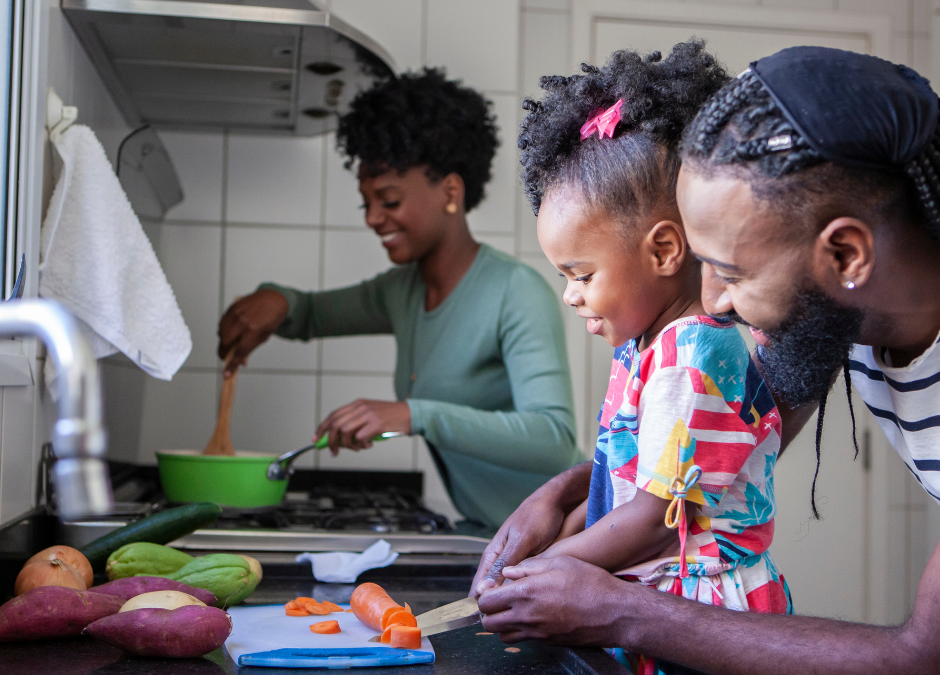Staying home to homeschool my kids has not been a financially easy decision. I’ve had several times I worked part-time to help us afford various things. But, there are also things I’ve done to cut down on costs to make it easier.
I’m not going to talk about buying a house in a bad school district or driving a used car or other things that I feel are just too obvious. I’m going to get down into the details of ways we have saved money on small things.
Stretching the Grocery Budget
 Some members of my family are allergic to wheat/gluten. This means that in an average week, my grocery bill is pretty high and there are only so many ways to help with that. But I do have a few ideas any family can do.
Some members of my family are allergic to wheat/gluten. This means that in an average week, my grocery bill is pretty high and there are only so many ways to help with that. But I do have a few ideas any family can do.
Cooking
If you aren’t comfortable with cooking, I highly recommend watching some good cooking shows. I learned from America’s Test Kitchen on PBS, though you can watch several of their shows on YouTube. There are lots of other great cooking shows too! Just don’t get distracted by shows that are about cooking but not designed to teach you how to do things. I love The Great British Bake-Off, but it hasn’t helped me much with making dinner.
When I first started staying at home, I found that using my crockpot in the morning to start some dinner made life far easier. There are tons of easy crockpot recipes out there. One super easy option is to throw in the crockpot your boneless skinless chicken and a jar of salsa with a half cup of water. Cook it for at least 4 hours on high. When it is time for dinner, shred the chicken and stir it together with some of the liquid, enough that it isn’t dry but not too much that it is watery. Now you have shredded chicken for tacos.
Meatless Mondays
While some fast food meals are economical, most of the time it is more economical to cook. One way to save money is to do a regularly occurring “Meatless Monday” to help your grocery budget. My favorite meatless recipe is to sauté some onion and garlic, add canned tomatoes, a drained can of black olives, and a teaspoon of Italian Seasoning. Cook your pasta of choice. Then add the pasta to the sauce along with a chopped up block of feta cheese.
Of course, the even easier option is to make a box of pasta and top it with a jar of sauce. Serving it with a side salad or garlic bread won’t break the bank and livens up this meal a lot.
Easy Dinner Night
 For our family, one or two rotisserie chickens from the grocery store are the basis for a pretty inexpensive and easy meal. The chicken can be served with a side of canned baked beans and frozen french fries, or it can top a salad. Both of these meals are ones we have had on nights I didn’t really want to cook. They aren’t as easy as getting delivery, but they are far cheaper.
For our family, one or two rotisserie chickens from the grocery store are the basis for a pretty inexpensive and easy meal. The chicken can be served with a side of canned baked beans and frozen french fries, or it can top a salad. Both of these meals are ones we have had on nights I didn’t really want to cook. They aren’t as easy as getting delivery, but they are far cheaper.
Taking it A Step Further
Now, after having that rotisserie chicken for dinner, the super economical thing to do is to throw the carcass in the crockpot, cover it with water, and make your own broth. My preferred method is to toss it in after dinner and let it simmer all night. I usually start it on high right after dinner, then turn it down to low overnight. In the morning I add onions, garlic, celery, and a carrot, if I have them on hand. Let it simmer for another 4 hours then strain and put into jars.
You can even save the pasta sauce jars you use, along with the lids, and use those to store your homemade broth. I don’t fill the jars all the way to the top, so it can expand in the freezer. I store my jars of broth in the freezer once they cool. Then I thaw them when I have a recipe calling for chicken broth.
Gardening
 First, let me tell you that starting a large garden is not cheap, and you may not see savings from having it for a couple of years if you don’t know what you are doing. I definitely did not know what I was getting into the first time I set up a garden.
First, let me tell you that starting a large garden is not cheap, and you may not see savings from having it for a couple of years if you don’t know what you are doing. I definitely did not know what I was getting into the first time I set up a garden.
If you have room outside to garden, be sure to read up on gardening methods and plant things you and your family will eat. Radishes are fun to grow because they grow very quickly, but if no one eats them, they are a waste. The other thing with a full-sized garden to be aware of is that you need to plant seasonally. Not all plants will thrive year-round. Lettuce grows best in cooler months, like spring and fall. Tomatoes and squash need the summer sun to grow best. And you need to pay attention to your planting zone so that you don’t plant things only to have them die.
Inside Gardens
This year, I purchased a couple of hydroponic garden things for our countertop in the kitchen. I have been very pleased with these. I have two different brands, and they both seem to work very well. I’ve grown tons of herbs, and lettuce, and I have started some other plants that will eventually move outside when the weather is right.
I did get my hydroponic set up on sale to help with the cost, and it was far cheaper than setting up the large garden in our yard. A few seeds and I was in business! This is a great option if you want to cook with fresh herbs or eat a lot of lettuce. I’m sure there are lots of other great things you can grow in them. I’m still learning.
Sewing
 Learning to sew can save you a ton of money. You can mend clothes, make new ones, and save on Halloween costumes. I’ve also sewn aprons as holiday gifts and made dolls for my nephews and nieces.
Learning to sew can save you a ton of money. You can mend clothes, make new ones, and save on Halloween costumes. I’ve also sewn aprons as holiday gifts and made dolls for my nephews and nieces.
It’s Not Easy
Staying at home is not easy to afford. It takes planning, work, and effort. I have learned new skills and pushed myself to figure out new skills I can do that will help. I also got my kids involved and called a lot of the things we did part of their education.
I hope a few of these ideas are helpful to you!





0 Comments